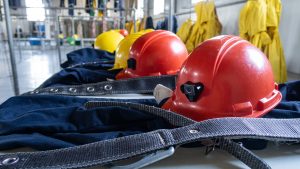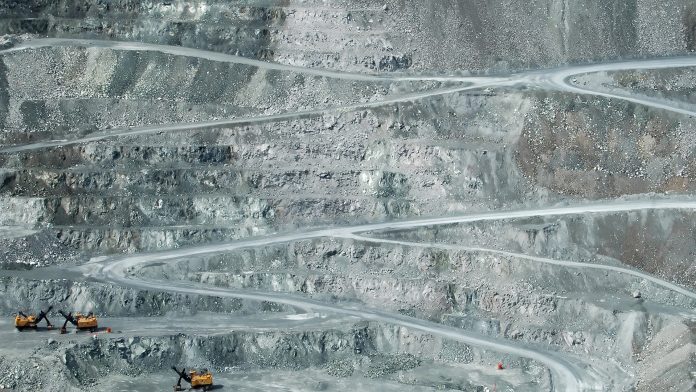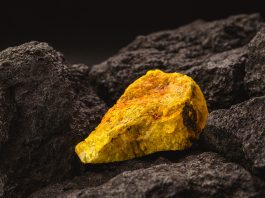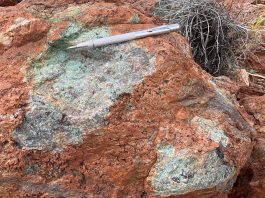The Québec Mining Association, an association with 88 years of experience in Québec’s mining landscape, explores the future production of Québec rare earths and plans to promote sustainable mining practices.
As the world takes stock of the required materials for reducing carbon production, critical materials become increasingly important. It is expected that by 2040, the world will need four times as many critical materials to sustain clean technologies.
Rare earth elements (REE) are one group of these critical materials, and various countries are stepping up their production of these. The province of Québec is well-known for its quantity of rare earths, meaning they are well positioned to ramp up exploration and production.
The Québec Mining Association (QMA), the association acting as the voice and representative of the mining industry in Québec, attending governmental policy discussions and promoting the interests of their communities and mining companies, tells us more about the future of the region.
Can you provide an overview of the recent projects undertaken by the Québec Mining Association (QMA)? How are these projects aligned with the Québec Mining Association’s long-term objectives?
The QMA is beginning a new strategic cycle with a plan that will run until 2026. The Board of Directors has adopted a new vision to further propel the QMA and the industry. Its new vision is:
‘In 2030, the QMA is recognised by its stakeholders as the catalyser for the mining industry, inspiring its members to follow an ethical approach and enabling them to respect the highest environmental, social and governance standards.’
The new strategic plan has five orientations:
- To reposition the industry’s communication strategy to focus on its tangible ESG achievements (leadership through action, lead by example);
- To improve the social acceptability and environmental and social performance of mining companies;
- To ensure the competitiveness and sustainability of the industry;
- To become a key player in the decarbonisation of the economy (positioning the industry as a real solution to certain climate issues); and
- To maintain its organisational strength of influence and increase its legitimacy.
Communication, the protection of the environment, and social acceptability will be at the heart of the following Action Plan. The QMA will put forward the know-how and innovations of the mining companies to reduce the environmental footprint and inform the population and stakeholders of the good practices of the mining industry in Québec.
In 2023, the QMA participated in many public consultations and concluded that the population generally does not know the mining industry well. The public is unaware of our industry’s legal and regulatory obligations and of how the mining industry works to reduce its environmental footprint. The QMA hopes that its new strategic plan will help improve that knowledge.

What role does the Québec Mining Association see for rare earths in the global push towards electric vehicles and renewable energy?
Rare earth elements are part of the critical minerals necessary for the transition to a low-carbon economy. It is well known that the global demand for critical minerals, including REE, will rise significantly as the adoption of electric vehicles and renewable energy technologies continues to grow.
Currently, no REE mines are in operation in Québec, but many deposits were identified. The QMA keeps an eye on the two projects that are the most advanced and under development in Northern Québec: Kwyjibo (SOQUEM) and Strange Lake (Torngat Metals).
Québec is rich in critical minerals, which enables us to become a leading player in the global energy transition. In October 2020, the Québec Government adopted a plan to valorise the development and production of critical minerals: Plan Québécois pour la valorisation des minéraux critiques et stratégiques’ (PQVMCS) and later a strategy to develop the battery value chain in Québec.
In doing so, Québec has decided to position its mining sector. It is stimulating the demand for Québec’s critical minerals. Many budget measures were put in place to help the development of mines and processing plants in Québec in that sector.
The province has substantial deposits of rare earths, and the mining industry in Québec has been exploring ways to extract and process these elements. Some key points regarding Québec’s role in the context of rare earths and the push towards electric vehicles and renewable energy include resource potential, supply chain security, economic opportunity, environmental considerations/research, and innovation.
Québec Mining Association greatly advocates for sustainability in the mining sector. Can you discuss how you promote sustainable practices?
The QMA and its members are committed to the Towards Sustainable Mining (TSM) standard. Developed by the Mining Association of Canada (MAC) in 2004, the TSM standard is a globally recognised sustainability programme that supports mining companies in managing key environmental and social risks. Since 2014, the TSM has been a condition of membership for QMA members.
The QMA supports its members in the implementation and monitoring of the protocols. The TSM management team is committed to remaining at the forefront of sustainable management of mining operations.
The initiative applies to all types of mining, including those mining for rare earths and battery metals. It includes nine protocols based on 30 indicators that support transparent and efficient communications with communities of interest and ensure that the main risks associated with mining are managed responsibly. Each year, mining companies must publish performance results for their facilities and state the improvement solutions to be put in place. These protocols are:
- Climate Change;
- Crisis Management and Communications Planning;
- Biodiversity Conservation Management;
- Indigenous and Community Relationships;
- Prevention of Child and Forced Labour;
- Safe, Healthy, and Respectful Workplaces;
- Tailings Management;
- Water Stewardship; and
- Equitable, Diverse, and Inclusive Workplaces.
The TSM is, therefore, a powerful tool to encourage and continuously improve sustainable practices in extracting all types of minerals, including rare earths and battery metals. Most important is that the TSM goes beyond legal and regulatory obligations and that all the results are public.
Are there any new technologies or methods being adopted in Québec to improve mining efficiency for rare earths and battery metals?
Several government aid and funding programmes are available to the mining industry, and even more are available for critical minerals. The sector may thereby improve its exploration techniques, extraction methods and processing technologies in terms of efficiency, environmental footprint reduction and enhanced overall sustainability. Research and development initiatives, supported by industry and government partnerships, can stimulate innovation in mining practices.
The Plan d’Action 2023-2025 pour la mise en œuvre du PQVMCS is one such method. It contains four orientations for the valorisation of rare earth minerals, increasing knowledge and expertise on strategic and critical minerals (SCMs), setting up or optimising integrated value chains in partnership with SCM-producing regions, contributing to the transition to a sustainable economy, and raising awareness, support and promotion.
Each orientation is described in terms of objectives, actions, managers, indicators, and targets. This makes the plan an excellent tool for improving the efficiency of mining for critical minerals, including rare earths and battery minerals.
How are you collaborating with other provinces or countries to advance mining in Québec?
In Canada, all the provincial associations and the two Canadian associations (MAC and PDAC) are part of the Canadian Mineral Industry Federation (CMIF). We meet a few times a year and have the opportunity to exchange ideas on issues affecting our industry, share experiences and discuss the provincial and federal framework.
The QMA, as a TSM partner association, also participates in discussions with other TSM partner associations across the globe. We share experiences and issues to improve TSM and its worldwide expansion.
What are the future plans of the Québec Mining Association?
With its new vision and strategic plan, the QMA is working on new communication tactics to reach the public better. According to a QMA survey of the Québec population, 78% of respondents have a poor understanding of the mining industry.
Based on these findings, the QMA has committed to providing more information and highlighting best practices in the industry, as well as the positive impacts of mining activities on Québec as a whole and on host communities in particular.
With our social and environmental practices as well as our legislative and regulatory framework, Québec can produce minerals and metals with the lowest environmental footprint in the world, and the QMA wants to share that with the public.
The QMA wants to gain the population’s confidence and raise awareness that it is better to mine here in Québec than in other, less responsible jurisdictions.
History shows that mining projects can develop with respect for local populations and the environment. Mining companies wish to remain partners of the communities in which they operate, which is why they favour the reconciliation of land uses and actions are taken daily to adhere to it.
The mining companies active in Québec have committed to the population to do things right and be respectful and responsible. Combined with access to the territory, in compliance with the rules and regulations, Québec is on the right track to remain among the best mining jurisdictions in the world.
Please note, this article will also appear in the seventeenth edition of our quarterly publication.









